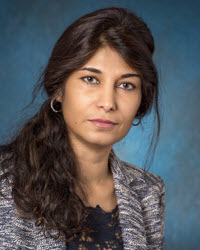A Self-Optimizing Fabric for the 5G era

The 5G connected world is anticipated to be omni-connected, wherein lines are blurred between cyber-physical systems, humans and machines; workloads processed locally or at a distance; and between consumers and producers of digital components and services. This world of a pervasive cloud will transcend both the conventional time boundaries as well as the spatial boundaries normally associated with distributed computing.
The research ecosystem will explore how a self-optimizing fabric (SOF) can address the complexity of distributing intelligence across disparate intelligent systems collaborating toward mutual tasks while maintaining separation of concerns.
A 5G connected world is essentially an ecosystem of interconnected intelligence systems. These systems will be complex, intricately intertwined, vastly interactive with order of magnitude larger information exchange than the current; and will evolve rapidly in directions that will be difficult (if not impossible) to plan, design, and operate using existing networking operational paradigms. This complexity results from the inter-relationship, inter-action, and inter-connectivity of different intelligent components within a system (e.g., network nodes, access points, data centers, etc.) and between this system and its dynamic environment.
Managing the complexity of such interconnected systems with dynamically evolving arrangement of intelligent components becomes the key challenge, requiring continuous optimization of resources to bring plan, design, and operations into a seamless continuum.
In this continuum, optimal state is maintained by enabling an intelligence system to “sense” the current condition, “discern” its meaning in the broader context, “infer” the current/potential deviation from the desired outcome, “decide” an optimal course of action to best achieve desired outcomes, and finally, “act” on these decisions on an ongoing basis. This control pattern of sense, discern, infer, decide, and act, when recursively applied to heterogenous intelligence systems, forms the genesis of a Self-Optimizing Fabric (SOF).
An ecosystem for SOF research
Within Ciena’s Adaptive Network™ vision, which combines programmability, intelligence, and automation, the research ecosystem will explore how SOF can address the complexity of distributing intelligence across disparate intelligent systems collaborating toward mutual tasks while maintaining separation of concerns. An example application of this would be mobile e-sports, wherein multiple mixed reality applications, edge delivery platforms, and network interconnectivity work in unison towards the common goal of delivering an optimal gaming quality of experience with seamless continuity across multiple mediums.
This new collaborative effort expands ENCQOR 5G’s mission that serves as the first Canadian pre-commercial corridor for 5G. SOF aims at evolving the ENCQOR 5G corridor with self-optimizing constructs for discovery and verification of real-world use-cases leveraging 5G, AI, and cloud technologies, all underpinned by the principles of the Adaptive Network.
So, if you’re an out of box thinker, or better yet, don’t even know there is a box, we want to talk…








